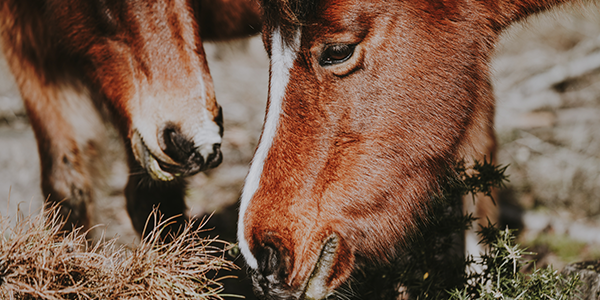Did you know that the overconsumption of pasture grass can cause obesity in horses. It has been reported that excessive pasture intake accounts for nearly 50 percent of all reported cases of laminitis. Laminitis is the inflammation of sensitive layers of tissue inside the hoof in horses. Continue reading to find out how you can help reduce risk with a horse grazing muzzle. Also, if you are looking for a horse property for sale in Colorado, contact Colorado Horse Property today and speak with one of our horse-person realtors.
A Horse Grazing Muzzle
Grazing muzzles are great because they reduce your horses bite size. They also restrict access to the entire grass leaf. Horses with grazing muzzles on can only really eat the top of the grass leaf. This is where the concentrations of sugar tend to be the lowest. Muzzled horses tend to graze larger areas and for longer periods. Therefore owners do not have to make big changes to their pastures. In addition, your horse will get more exercise as it has to move around more to graze. Weight loss will also reduce your horse’s risk of certain diseases.
Though sometimes clinicians ask owners to totally restrict their horse’s grazing, this is not always necessary. Grazing muzzles are a great alternative to total grazing restrictions. For example, horses predisposed to a metabolic disorder can still benefit from restricted grazing. So how do you know if your horse could benefit from a grazing muzzle? First determine the horse’s laminitis risk. Of course there are other factors for horse laminitis to consider like breed, age, and sex. Ponies are actually more commonly affected by laminitis than full sized horses. Ponies graze too much when given unrestricted access to pastures. Therefore, many pony owners in Colorado also own grazing muzzles to encourage weight loss.



